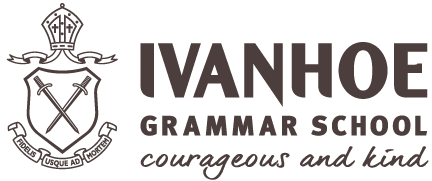History
Ivanhoe Grammar School was originally known as St James’ Church of England Grammar School for Boys. Founding Headmaster, The Reverend Sydney Buckley, was the local Parish Priest and the school was based inside the parish hall. Less than twenty students constituted the initial enrolment in 1915 but by the end of 1919 enrolments had doubled, sparking a need to relocate. The expansion was made possible by the generosity of the School and Church community when Ivanhoe House was purchased from parishioners Mr and Mrs Horace Wilcox and the school was renamed Ivanhoe Grammar School.
At this time, the School crest and motto were formalised as well as the brown and white school colours. From the commencement of the 1920 school year at the new location, enrolments grew strongly and the School Council recognised a further need to expand the facilities of the School. Locksley House was built in 1924 and became the principal place of learning until 1960.
For two years during the Second World War, the School relocated to Yea, in central Victoria, although some students remained in Ivanhoe attending classes back at the old parish hall. Hundreds of the School’s alumni and many staff served in the war and Ivanhoe continues to acknowledge this each year on ANZAC Day.
The opening of the Memorial Junior School in 1955, to honour those past students who gave their lives in the Second World War, provided a new home for primary aged students. It has remained at that location ever since, although it has been completely rebuilt to cater for twenty-first century learners. It is now called Buckley House.
In 1990 the new campus at Doreen opened with around 70 students and in 1992 the decision was taken that Plenty Campus should become co-educational. Today, the School is proudly co-educational at all campuses.
Ivanhoe’s success is derived from its capacity to adapt to changing circumstances and educational priorities while retaining the core values that have always been at the heart of the School’s philosophy, in particular service to the community. Its membership of the International Round Square Association of Schools has provided an outstanding platform for Ivanhoe to deepen its international mindset and increase opportunities for its students to prepare for life and work in a more global environment.
The School’s centenary year in 2015 was an occasion for the School and wider community to gaze affectionately at the journey travelled, from its humble beginnings in the local parish hall to the formidable centre of learning it has become.
The Eras: Buckley, Brown, Sligo, Fraser and Foley
Since 1915, Ivanhoe Grammar School has seen only five Principals, each one building upon the foundations set by those who went before. Each era ushered in changes big and small and are the building blocks that make the School we know and love today.
The Buckey Era
Reverend Sydney Buckley
Founding Principal and Headmaster 1915 – 1947
The Reverend Sydney Buckley was the parish priest at St James Church of England in 1914 when, in conversation with his choir boys, the possibility of a parish school was raised. Buckley pursued the idea and despite some opposition within the church he did gain the support of the Archbishop.
St James Church of England Grammar School for Boys opened its doors for the first time in 1915 and fourteen boys made up the initial enrolment. In time, it became evident that Buckley needed support in order to carry out his duties as vicar and head and so a part time assistant was appointed.
By the end of 1916 the School Council was already discussing the need for the school to relocate however Buckley applied for leave of absence in order to enlist. The School was barely two years old and its Headmaster felt compelled, like so many others, to add to the large numbers going off to war. The Reverend Hamilton from Goulburn was appointed enabling Buckley to depart for Europe.
Upon his return in 1918 Buckley outlined his view that the school and the parish would now each benefit from independent leadership and the School a new site. Soon after he entered into discussions with Mr Horace Wilcox, a member of the School Council, for the purchase of Ivanhoe House.
In 1920 the move to the current site occurred and the school was renamed. Also in 1920, the school badge was introduced and our colours, brown and white, were fully integrated into our school uniform.
The latter part of Sydney Buckley’s headmastership was marked by Australia’s involvement in World War Two. Offering the school for the Army’s use in 1942 he relocated the school to Yea, in central Victoria, although a smaller number of students remained and attended classes at St James’, Ivanhoe. The Yea years are recalled with great affection by those who were there but overall the war years took a great toll on Buckley. While he was a person of inestimable courage and determination, upon returning to Ivanhoe towards the end of the war Mr Buckley felt it was time to retire.
The Brown Era
Mr Victor Brown
Headmaster 1948 – 1974
Following an international search Victor Brown, a Rhodes Scholar and Oxford graduate who was teaching in England at the time, was appointed to the headmastership. When Brown arrived in 1948 he was astounded by the poor condition of the school. The 1950’s saw a gradual rise in student numbers and a pressing need to provide additional classroom accommodation. In 1955, the Memorial Junior School was opened and within ten years the Wilcox and Lee buildings were added along with a further extension to the Memorial Junior School.
Brown emphasised the importance of higher academic standards. He introduced many innovations and encouraged his staff to focus more on the scholastic progress of the students. This shift was met with resistance in some quarters particularly amongst the old Buckley men. Brown pushed ahead regardless and the performance of his students at the annual examinations improved markedly. He championed the performing arts as part of the school’s cultural renewal, and music and drama flourished. Further, and to the chagrin of some Buckley loyalists, he introduced a student newspaper, The IGS Spectator, a Student Council and a Public Questions Society to encourage debating and student interest in local and world affairs.
The 1950s and 1960s were decades that saw the rise of Rock and Roll, James Dean, Bob Dylan, the Rolling Stones and the Vietnam War. Young people questioned the values and beliefs of their politicians, parents and teachers. Carefully, Victor Brown guided the school through these sometimes tumultuous years while placing enormous trust in his students to interpret them broadly, beyond the immediate thrill of rebellion. Ivanhoe Grammar had become a very different and interesting school.
The Sligo Era
Reverend Charles Sligo
Headmaster 1974 – 1996
Charles Sligo came to Ivanhoe as an experienced Headmaster. His vision was articulated clearly and it was to be based upon traditional “public” school values and symbols. Sligo once described Ivanhoe as a diamond that needed a little polishing and he set about strengthening the school’s self-confidence and pride in itself. It was the antithesis of the individualism that characterised the sixties and early seventies. Sligo wanted each boy to develop a strong sense of belonging to the school and of being part of something special.
Sligo introduced mass singing at weekly assemblies, which he often led. He looked for ways to assist boys towards their manhood through leadership, cadets, outdoor education and sport and he looked for opportunities to support excellence and bring it to the surface. These aspects of school life thrived throughout his headship. In 1980 Sligo’s first AGSV premiership was won. The swimming team’s famous victory was Ivanhoe’s first swimming premiership in 40 years and so the entire school was given a holiday. The cheering in assembly the following day must have confirmed for Sligo the importance of success in sport in building school spirit. It heralded an extraordinary era in sporting success at the school which lasted almost two decades.
As public funding for private schools diminished the school’s governing body and its headmaster recognised the importance of planning for the school’s long term financial security. Models of fundraising were considered and Ian Rule was appointed to establish the Development Office.
In addition to the country centre at Lima East, land at Mernda was purchased and in 1990 a new Ivanhoe Campus opened. Within a short time, girls were added to the enrolment. Sligo transformed a relatively small and rather parochial school into a large complex organisation. His leadership was fundamental to the rise in prominence of Ivanhoe Grammar School as a major educational provider with a proud reputation across Australia.
The Fraser Era
Mr Rod Fraser AM
Principal 1996 -2015
Rod Fraser commenced his role as the School’s Principal in 1996. He had previously had senior roles in both Tasmania and NSW prior to returning to Victoria. Ivanhoe had not long been a multi-campus school and co-education at Plenty Campus was yet to reach Year 12. Fraser’s arrival coincided with the emergence of computers in schools, a more global perspective and increasingly strong connections to Asia.
In June 2015 Fraser was acknowledged in the Queen’s Birthday Honours list with a Member (AM) in the General Division for significant service to secondary education, to national and international learning development organisations, and to the community.
Our membership of Round Square occurred in 1997 representing a significant turning point in the history of the school. By the time it was Ivanhoe’s turn to host the International Round Square Conference in 2005 its pillars of internationalism, democracy, environment, adventure, leadership and service had become embedded in every aspect of student life. In particular, internationalism has become a major thrust made manifest through Round Square activities, Cambodia Service Trip, the International Baccalaureate, the enrolment of overseas students and the Year 9 international trips program.
Early on, Fraser put in place a number of strategies to strengthen his one school philosophy. Whole school events were introduced including services at the cathedral and gala presentation evenings. Professional Development events were scheduled bringing together staff resulting in a shared curriculum across the school. Overseas trips, seminars, cadets, sport and performing arts became increasingly one school in approach and practice.
Significant changes to the uniform were made, girls were enrolled at Buckley House and the notebook computer program provided impetus for change throughout the curriculum. Vertical pastoral care structures were introduced at the Ridgeway Campus underlining Fraser’s desire to create a friendlier environment for every child and where cross age mentoring might occur as a natural part of school life.
Rod Fraser has placed Ivanhoe Grammar firmly into various international networks of schools and organisations creating extraordinary opportunities for our students. More than ever, Ivanhoe students are living and working internationally and playing their part in a world vastly different to that when in 1915 St James’ Grammar School of Boys first opened its doors.
The Foley Era
Mr Gerard Foley
Principal 2015 – Current
Mr Gerard Foley leads the School into a new era with the firm beliefs that all students have the capacity to succeed, that community and caring for others is paramount and that education can provide outstanding opportunities for all who embrace it. Gerard was Acting Principal of the School throughout 2014, after being appointed to the School in 2008 as the Head of The Ridgeway Campus and Deputy Principal in 2011. His career has spanned roles in the independent and government sector and includes the Head of Senior School at Overnewton Anglican College and VCE Coordinator at Eltham College.
Gerard’s key aims are to assist students to develop their unique potential by providing a range of rich experiences through academic opportunities, the creative and performing arts, sport, outdoor education, intercultural understanding, leadership and service to others. He believes that active, engaged, critical and empathetic global citizens are created through exposure to local and international issues via the curriculum, and a range of community and international experiences.
As part of his commitment to helping students to become global citizens the Global Citizenship Centre launched in May 2017, the Centre is run in partnership with JUMP! Foundation, a not-for-profit social enterprise specialising in youth empowerment, leadership and global citizenship education. Using the UN Global Goals as a foundation, students are asked to consider how these goals can be reached, and the future they want to see grow from their own actions.
Under Gerard’s leadership, the School embarked on an innovative Australian-first partnership with La Trobe University to provide Year 9 students with a year-long hybrid secondary school-university learning experience. Out of this University Campus was born and accepted students in the early commencement period of 2018.
One of Gerard’s key priorities is the development of young people of character which has seen the creation of the Ivanhoe Learner. The Ivanhoe Learner is the embodiment of a young person of character. A person who is courageous, innovative, balanced, collaborative, ethical, reflective and compassionate. These attributes have been integrated into every aspect of the learning experience from ELC to Year 12.







